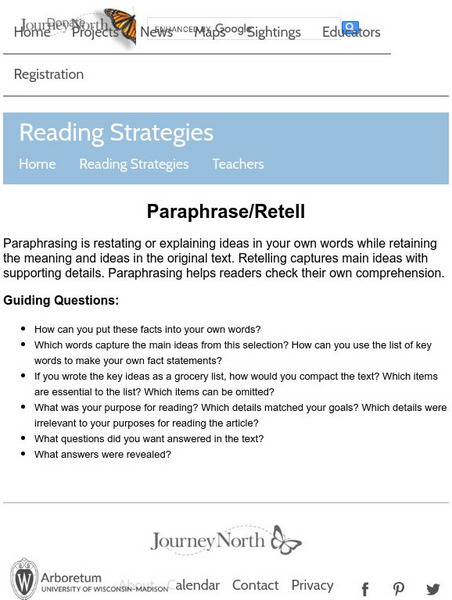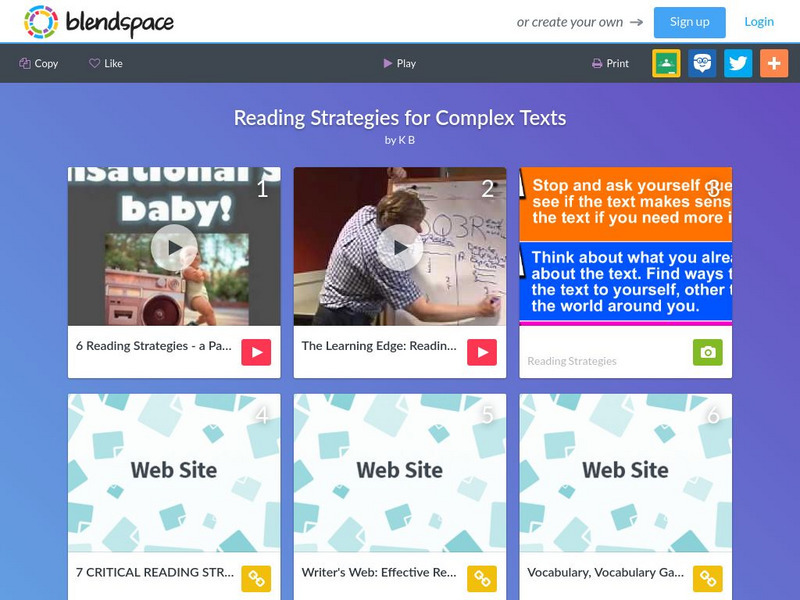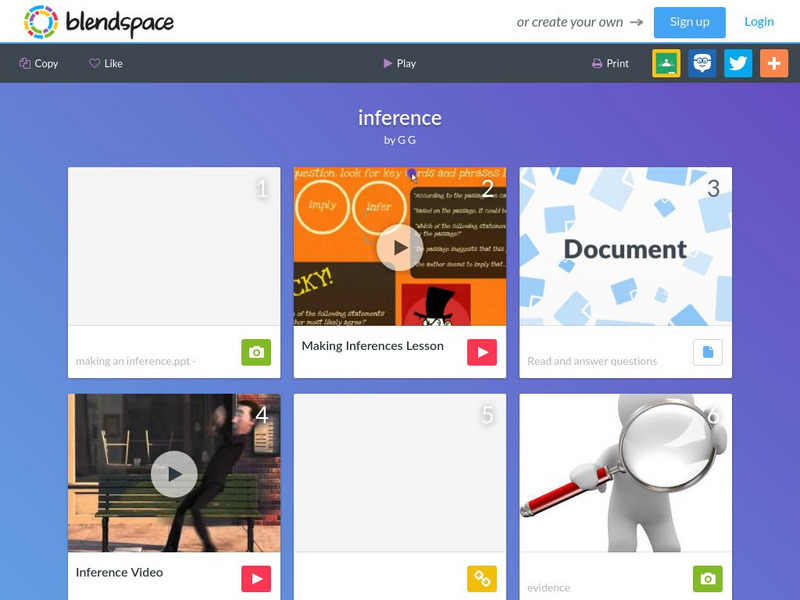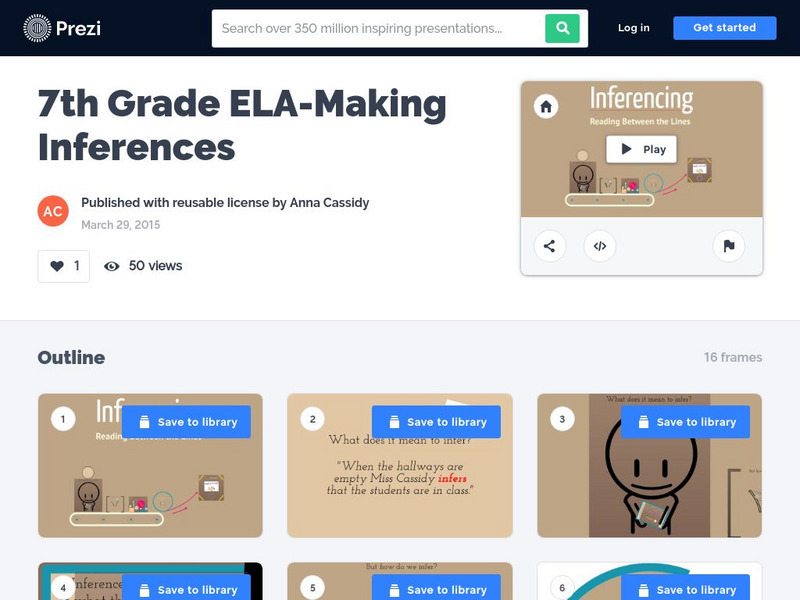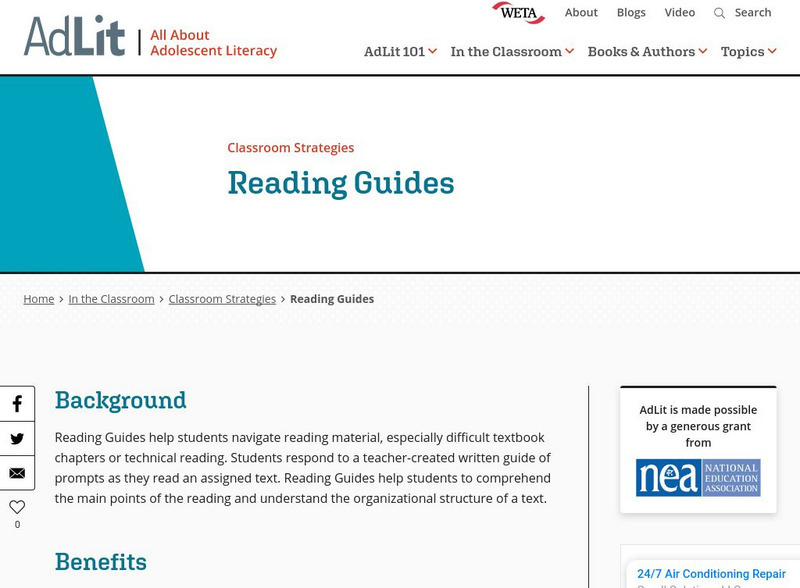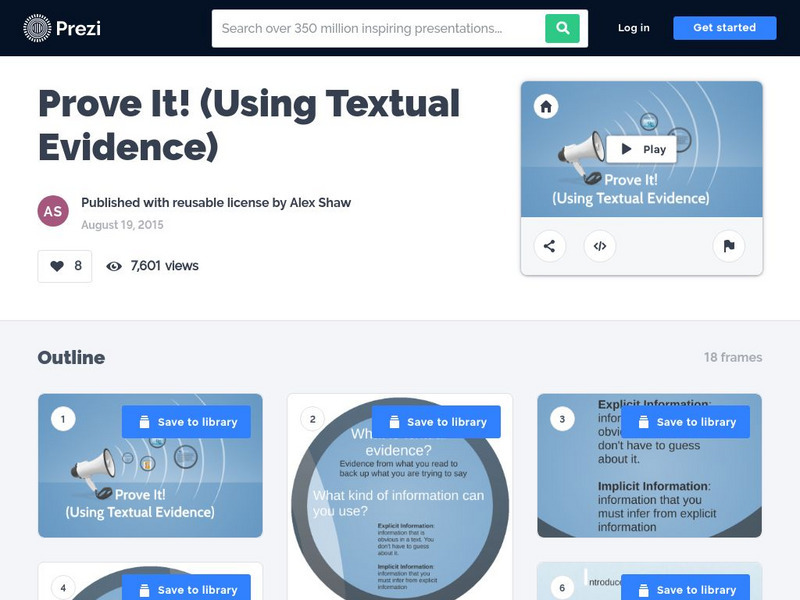AdLit
Ad lit.org: Classroom Strategies: Question the Author (Qt A)
Question the Author (QtA) is a comprehension strategy that requires students to pose queries while reading the text in order to challenge their understanding and solidify their knowledge (Beck et al., 1997).
AdLit
Ad lit.org: Multiple Texts: Multiple Opportunities for Teaching and Learning
Engaging all students in a themed study or unit is a challenge that teachers can resolve by using materials that match students' independent or instructional reading levels (Robb 1994, 2000). When students face textbooks that are above...
AdLit
Ad lit.org: Literacy Instruction in the Content Areas: The Core of Improvement
Every content area, from chemistry to history, has unique literacy demands: texts, knowledge, skills. But how are these critical literacies learned, let alone taught?
E Reading Worksheets
E Reading Worksheets: Text Structure: Test 3
In this text structure test, students read passages and select the correct text structure; they are sometimes asked to explain how the evidence to prove their selections.
E Reading Worksheets
E Reading Worksheets: Text Structure: Reading Test 4
In this text structure reading test, students read passages and select the pattern of organization used; they sometimes have to explain their reasons using evidence from the text.
Quia
Quia: Rags to Riches: Context Clues
In this game, students use context clues in the passage to determine the meaning of vocabulary words.
Other
Speech Language Resources: Inference and Reading: A Guide for School Age Students
An explanation of inferences and how to make them. Examples and links to additional learning exercises are included.
Other
Hickman Community Charter District: Informative Writing
Sample topics in informative writing for K-3rd grades and 4th-8th grades. CSS.ELA-Literacy.CCRA.W.2. CCSS.ELA-Literacy.WHST.6-8.9 Draw evidence from informational texts to support analysis, reflection, and research.
Annenberg Foundation
Annenberg Learner: Journey North: Reading Strategies: Make Inferences and Draw Conclusions
Learn how to go beyond the literal meaning of a text by using a list of guiding questions to make inferences and draw conclusions.
Annenberg Foundation
Annenberg Learner: Journey North: Reading Strategies: Paraphrase / Retell
Learn how to paraphrase a text by using a list of guiding questions.
Quia
Quia: Making Inferences, Summaries, and Conclusions
Read a short text and then choose the correct inference, summary, or conclusion in this Rags to Riches style game.
Quia
Quia: Inferences Rags to Riches
Read a short text and then choose the correct inference in this Rags to Riches style game.
Daily Teaching Tools
Daily Teaching Tools: Underlining for Comprehension
This Daily Teaching Tools resource provides a test taking strategy. Students will engage in underlining as they preview directions and texts. Students can continue with this strategy as they read.
TES Global
Blendspace: Reading Strategies for Complex Texts
A nine-part learning module on reading strategies including links to videos, images, websites, and activities.
TES Global
Blendspace: Inference
A fifteen-part learning module with links to images, videos, websites, and texts to use while learning to make inferences.
Other
Prezi: Explicit v. Implicit Meaning
Slideshow investigates how to determine what the text is saying v. what it means.
Other
Prezi: 7th Grade Ela Making Inferences
Slideshow explores how to read between the line while offering examples for practicing.
Tom Richey
Slide Share: Prediction and Inference: A Reading Strategy
This downloadable slideshow focuses on prediction and inference including the similarities and differences between them, when the reader does each, and questions to ask as you are reading.
ClassFlow
Class Flow: Reading Comprehension: Context Clues and Inferences
[Free Registration/Login Required] This reading comprehension flipchart uses Activote and a puzzle to review context clues and inferences. It is intended to review for the FCAT or other state assessment exams.
Other
Laflemm.com: Reading Resources: Inference
This page has reading tips and exercises that explain inferences. There is an answer key for students to check their work. RL.9-10.1, RL.11-12.1, RI.9-10.1 & RL.11-12.1 textual evidence and inferences
AdLit
Ad lit.org: Classroom Strategies: Reading Guides
Reading Guides help students navigate reading material, especially difficult textbook chapters or technical reading. Students respond to a teacher-created written guide of prompts as they read an assigned text. Reading Guides help...
Polk Brothers Foundation Center for Urban Education at DePaul University
Depaul University: Center for Urban Education: I Can Make an Inference [Pdf]
Students can use this graphic organizer to help them make inferences about the information in a text and then explain the rationale for each.
Other
Prezi: Prove It! (Using Textual Evidence)
Slideshow explains textual evidence and how to use the I.C.E. method when citing it.
Other
Prezi: Explicit vs. Implicit
Slideshow explains the difference between explicit and implicit meaning in texts and visuals. Includes good examples and practice questions.








